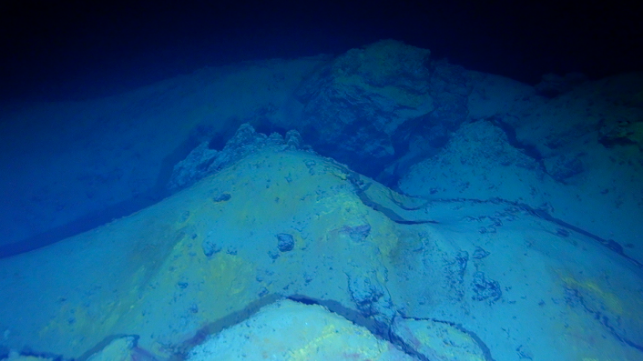New Technique Developed to Explore Seafloor Mineral Deposits

A new project has been announced to reduce the potential environmental impact of seafloor mining.
Many deposits were formed by hot springs on the seafloor and the vast majority of these now lie under a blanket of marine sediment. The question facing geologists is whether these buried mineral deposits still contain valuable metals: have they been dissolved since they formed thousands of years ago beneath the Earth’s crust or become even more concentrated?
Project ULTRA will address these questions using a robotic drilling rig to drill the deposits. This will also generate the first three dimensional image of the deposits, using scientific instruments on the surrounding seafloor to listen to vibrations from the drill as it bores through the seafloor. The boreholes will then be sealed and returned to a year later, when fluids will be tapped-off from the plugs to test for reactions deep inside the deposit.
The rock core taken by the drill and the fluid samples will reveal the composition and structure of these types of mineral deposit to identify where the most valuable metals are located in the deposit. In this way, Project ULTRA will help ensure any future exploitation would be able to minimize the disturbance to the seafloor and its surrounding environment.
Project ULTRA has been funded by the Natural Environmental Research Council (NERC), and will be led by Professor Bramley Murton at the National Oceanography Centre (NOC). The project forms part of the NOC’s ongoing research into seafloor resources and is a collaboration with the British Geological Survey (BGS), the Universities of Southampton, Cardiff and Leeds, Memorial University in Canada, as well as Oxford Museum, GEOMAR, Nautilus Minerals, VNIIOkeangeologia from Russia, and SMD Ltd.
Rising demand for minerals and metals has sparked renewed interest in seabed mining. Since 2001, the International Seabed Authority has issued licenses to approximately 30 government and private organizations to explore 500,000 square miles of the deep sea outside national jurisdiction for minerals.
This increasing interest in seafloor mining globally has drawn some criticism. Despite the term “mining,” much of the activity would involve extraction of minerals over very wide areas of the sea floor rather than digging down to any great depth, potentially leaving a vast footprint on the deepsea habitats in which these mineral deposits occur. Earlier this year, a study by the University of Exeter and Greenpeace warned that mining on the ocean floor could do irreversible damage to deepsea ecosystems. The deep sea (depths below 200m) covers about half of the Earth’s surface and is home to a vast range of species.
New discoveries continue to be made about the ecology of deep seafloor environments. Earlier this year, scientists from NOC and the University of Southampton found a series of depressions forming mysterious “tracks” on the seafloor that may be an unprecedented record of deep-diving whales.
Additionally, U.K. scientists recently discovered that bacteria in the deepest parts of the seafloor are absorbing carbon dioxide and could be an additional food source for other deep-sea life.
